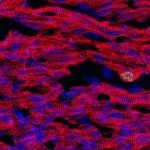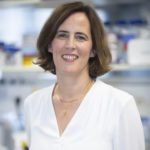Link to Pubmed [PMID] – 25388582
Med Sci (Paris) 2014 Nov;30(11):996-1003
After the seminal discovery in 2000 that primary cilia are functional organelles which are essential for embryonic development, several mouse models of ciliopathies have been generated. The heart is frequently affected, with a large spectrum of malformations. The cilia of the node are required early in development in the determination of the left/right laterality of the embryo, which has secondary consequences on the formation of the heart. Thus, abnormal looping of the heart is a recurrent phenotype in models of ciliopathies. However, the function of primary cilia in cardiac cells remains poorly understood. Receptors such as polycystins or hedgehog receptors are usually localized in the primary cilium, raising the possibility that these signalling pathways, which are important for the septation and the growth of the heart, are transduced in primary cilia of cardiac cells. Knowledge of the roles of primary cilia at different steps of heart development and in different cardiac cell types will be essential to better understand the origin of human cardiopathies associated with ciliopathies.

